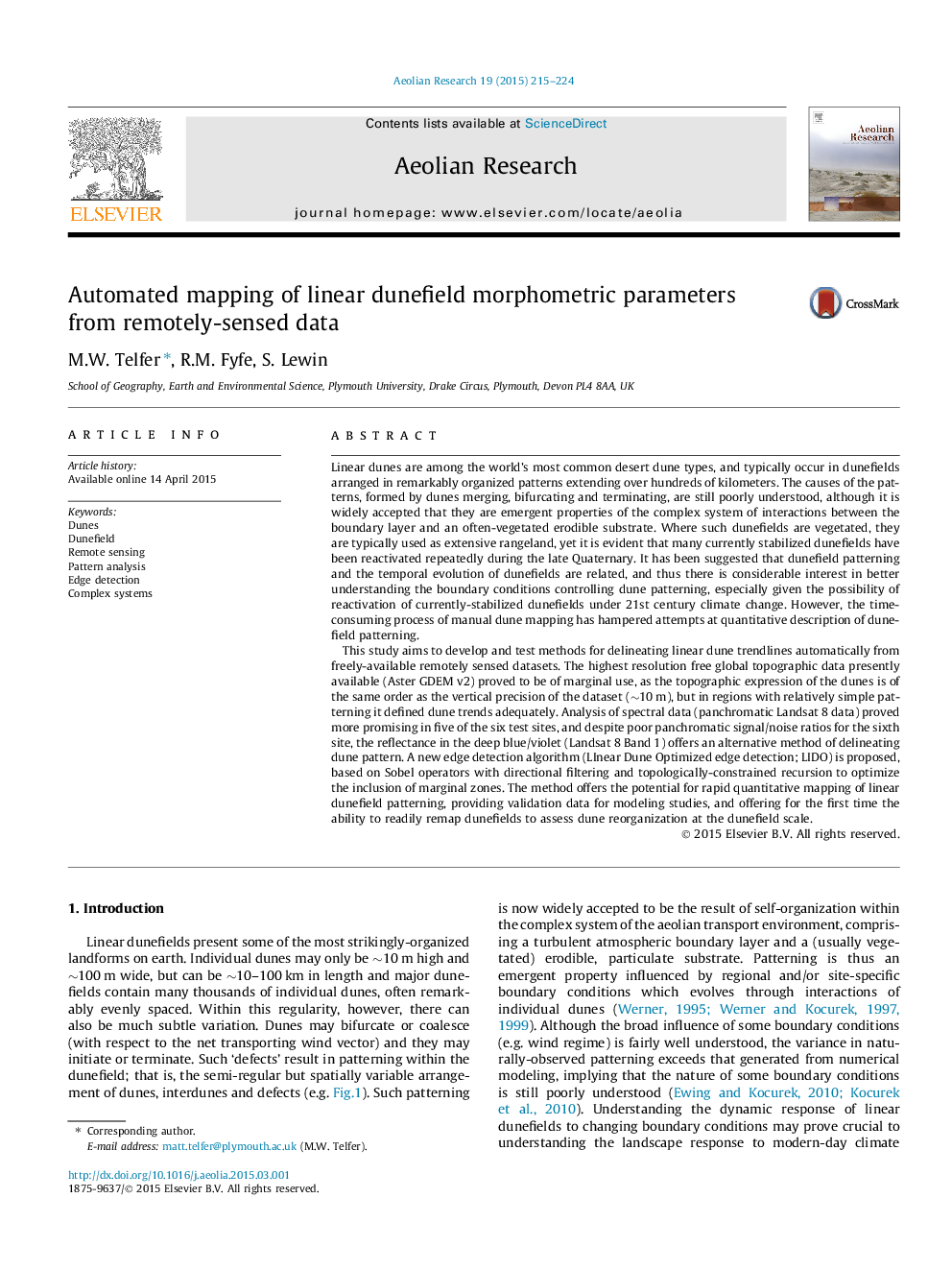| کد مقاله | کد نشریه | سال انتشار | مقاله انگلیسی | نسخه تمام متن |
|---|---|---|---|---|
| 4673785 | 1346955 | 2015 | 10 صفحه PDF | دانلود رایگان |

• Methods for automatically delineating linear dune patterning are tested.
• Current global free DEM data only successful in some cases where pattern is simple.
• High-resolution spectral data (Landsat 8 Band 8) prove most promising.
• A new edge-detection algorithm proves highly successful in mapping dune patterns.
• Landsat 8 Band 1 (“coastal/aerosol”; deep blue/violet) proves useful in some cases.
Linear dunes are among the world’s most common desert dune types, and typically occur in dunefields arranged in remarkably organized patterns extending over hundreds of kilometers. The causes of the patterns, formed by dunes merging, bifurcating and terminating, are still poorly understood, although it is widely accepted that they are emergent properties of the complex system of interactions between the boundary layer and an often-vegetated erodible substrate. Where such dunefields are vegetated, they are typically used as extensive rangeland, yet it is evident that many currently stabilized dunefields have been reactivated repeatedly during the late Quaternary. It has been suggested that dunefield patterning and the temporal evolution of dunefields are related, and thus there is considerable interest in better understanding the boundary conditions controlling dune patterning, especially given the possibility of reactivation of currently-stabilized dunefields under 21st century climate change. However, the time-consuming process of manual dune mapping has hampered attempts at quantitative description of dunefield patterning.This study aims to develop and test methods for delineating linear dune trendlines automatically from freely-available remotely sensed datasets. The highest resolution free global topographic data presently available (Aster GDEM v2) proved to be of marginal use, as the topographic expression of the dunes is of the same order as the vertical precision of the dataset (∼10 m), but in regions with relatively simple patterning it defined dune trends adequately. Analysis of spectral data (panchromatic Landsat 8 data) proved more promising in five of the six test sites, and despite poor panchromatic signal/noise ratios for the sixth site, the reflectance in the deep blue/violet (Landsat 8 Band 1) offers an alternative method of delineating dune pattern. A new edge detection algorithm (LInear Dune Optimized edge detection; LIDO) is proposed, based on Sobel operators with directional filtering and topologically-constrained recursion to optimize the inclusion of marginal zones. The method offers the potential for rapid quantitative mapping of linear dunefield patterning, providing validation data for modeling studies, and offering for the first time the ability to readily remap dunefields to assess dune reorganization at the dunefield scale.
Journal: Aeolian Research - Volume 19, Part B, December 2015, Pages 215–224